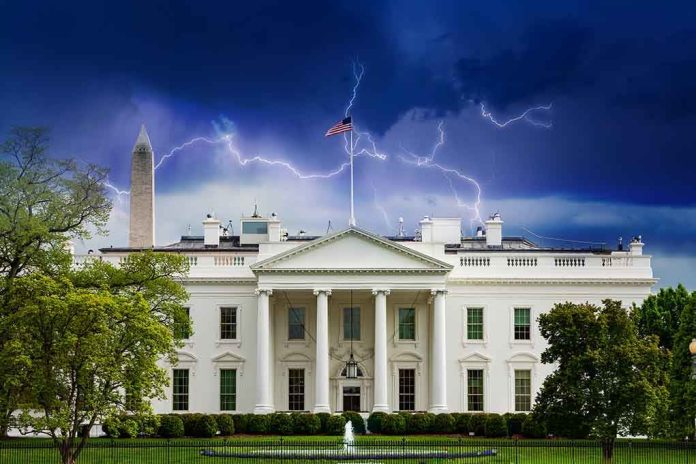
Over 8,000 federal employees earning more than the U.S. president’s salary symbolizes government excess, sparking debates over fiscal responsibility.
Story Highlights
- 8,000+ federal employees out-earn the U.S. president’s $400,000 salary.
- White House salary report under Trump renews scrutiny of federal pay scales.
- OPM memo encourages maximum pay for political appointees, raising cronyism concerns.
- Lawmakers demand transparency for high compensation practices.
Federal Payroll: A Question of Priorities
In 2025, a startling revelation from the White House salary report indicated that over 8,000 federal employees receive a salary exceeding that of the U.S. president, set at $400,000 annually since 2001. This disparity underscores significant issues around government spending and priorities, especially under the Trump administration. With the president’s salary serving as a benchmark, the high compensation for federal employees has raised questions about fiscal responsibility and transparency.
The federal workforce’s pay scales have seen continuous growth, with senior executives and political appointees often at the forefront. The Office of Personnel Management’s (OPM) memo in May 2025, which encouraged agencies to offer the maximum salary of $195,200 to political appointees, has intensified debates over federal compensation. This bypassing of standard HR processes has raised red flags about potential cronyism and the displacement of career civil servants.
Political Implications and Oversight
Lawmakers, watchdogs, and the general public have expressed concerns over the implications of these pay practices. The administration defends its approach, arguing that competitive pay is necessary to attract qualified personnel. However, critics argue that such compensation undermines merit-based civil service and erodes public trust. The debate has spurred congressional inquiries and demands for justification, particularly regarding the firing of career staff to make room for political appointees.
Congress provides oversight but often reacts after the fact, highlighting a power dynamic where the executive branch exercises significant discretion over appointments and pay. This scenario fuels partisan debates over government reform, spending, and political patronage, with taxpayers ultimately bearing the burden of higher payroll costs.
Broader Impacts and Future Reforms
In the short term, the scrutiny of federal pay practices may lead to morale issues among career staff and continued political controversy. Long-term effects could include legislative reforms and changes in hiring practices, potentially shifting public trust in government operations. The issue also sets a precedent for public sector compensation and transparency, potentially influencing pay practices at state and local government levels.
The story of federal employees out-earning the president continues to evolve, serving as a cautionary tale of government excess and inefficiency. As lawmakers scrutinize these practices, the narrative underscores the need for transparency and accountability in the way taxpayer dollars are allocated and spent.
Sources:
White House 2025 Salary List: Trump’s Pay Staff
White House Reveals Highest-Paid Staffers, 8 Taking No Salaries
Biden Issues Executive Order on 2025 Federal Pay Raise
Trump Admin Encourages Max $200k Pay for Political Appointees





